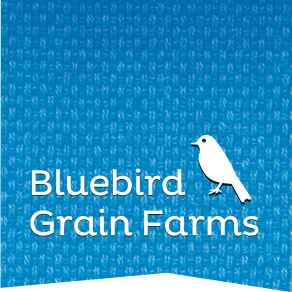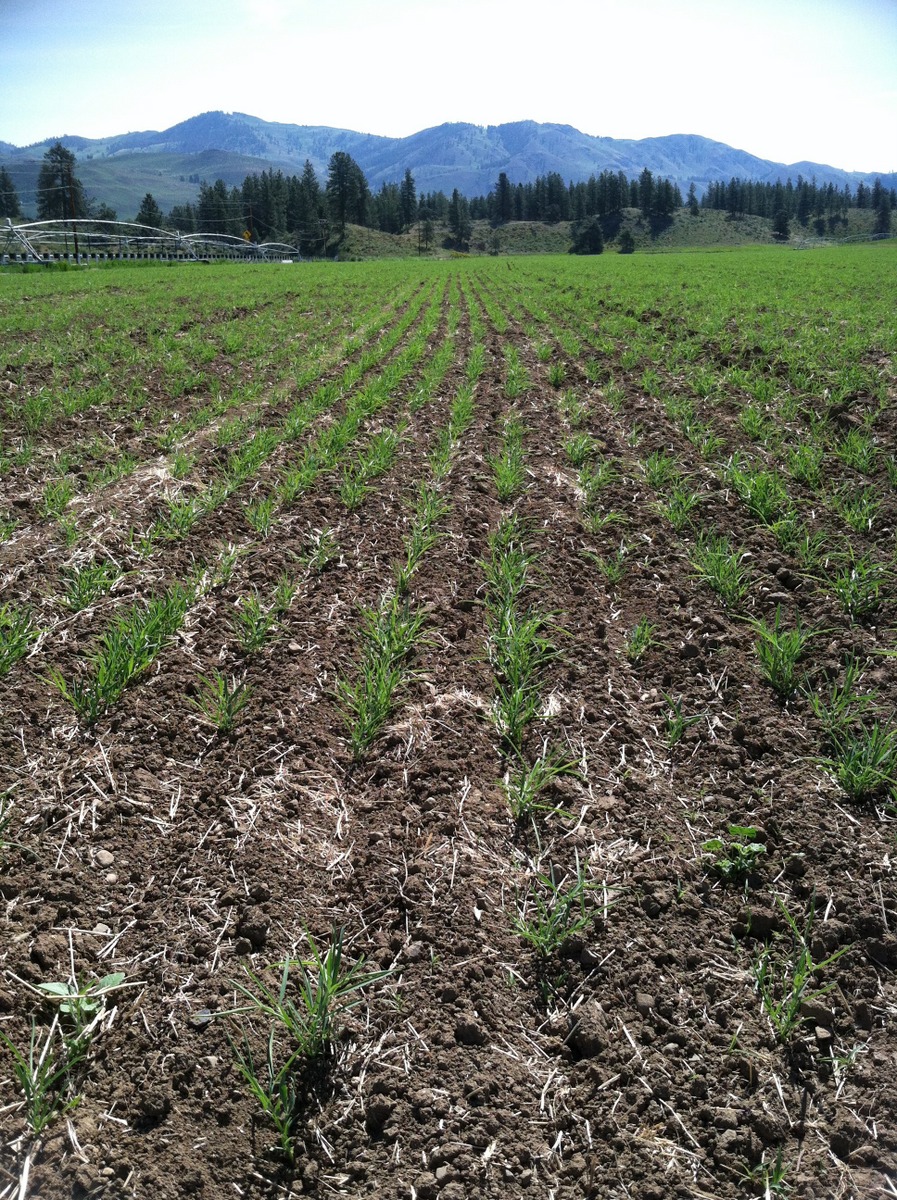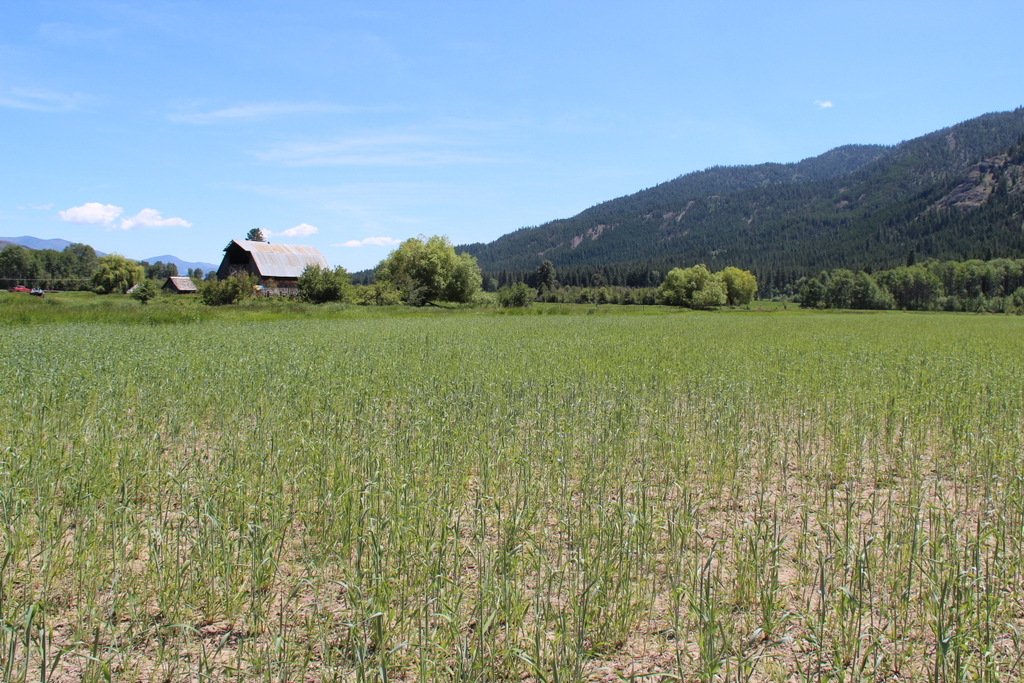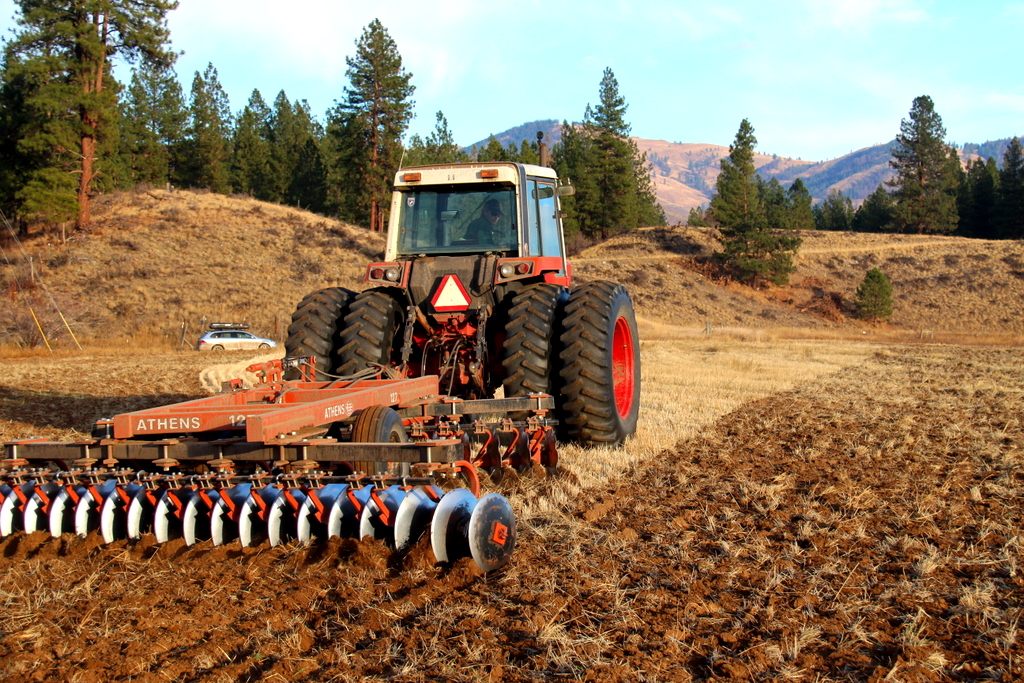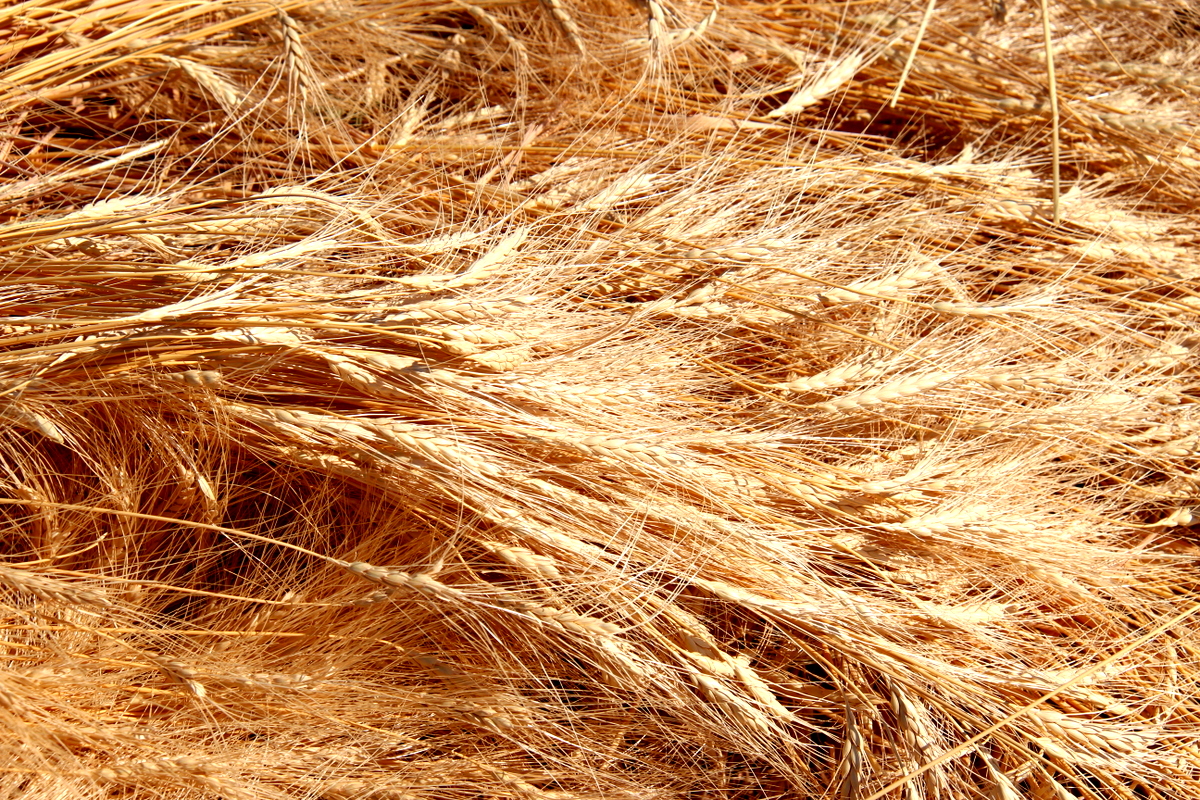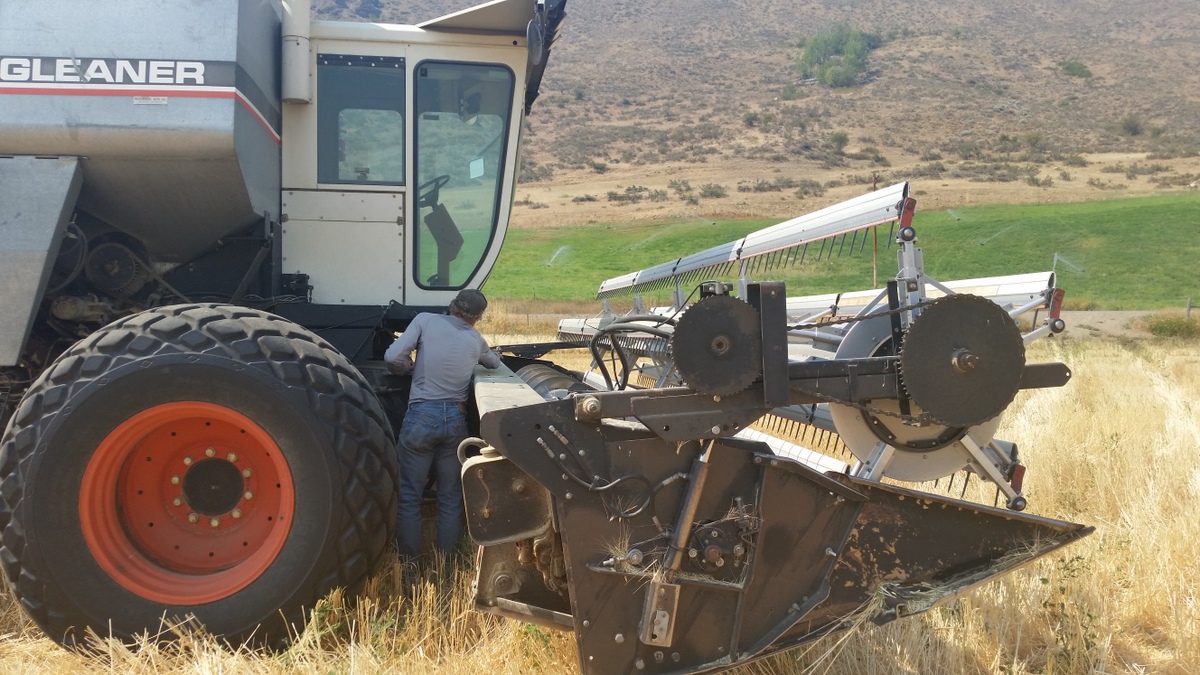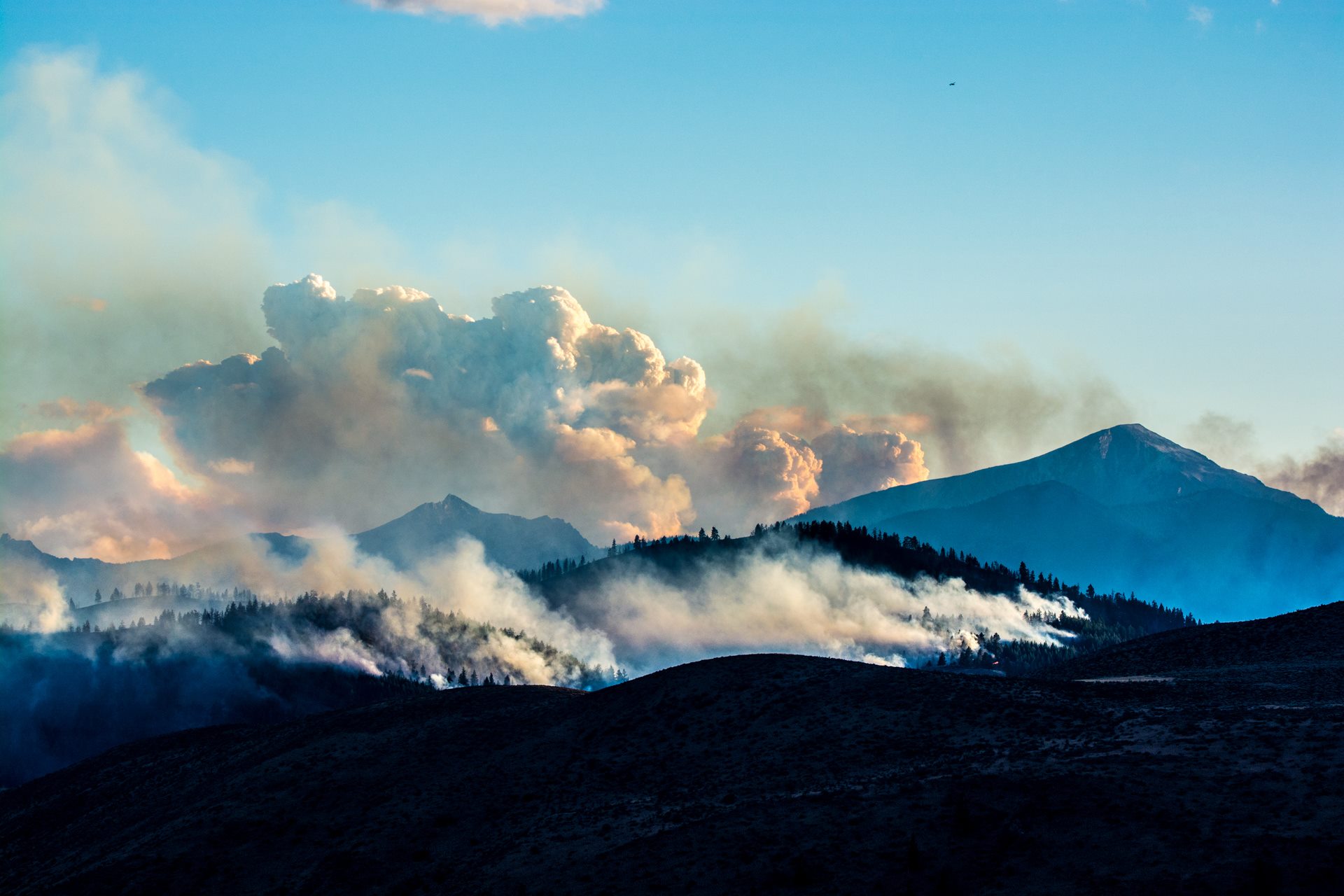The heat is on… again. After a hot spring and a much cooler and moister July than usual, August has finally shed the last (hopefully) of the thunderstorms, heavy rain, and hail and has come off cooking the way we think of August. Each day this week has reached well into the 90’s and though the swallows have all headed out, a few hummingbirds remain as the last of the fruit and flowers wither. Birds pay more attention to the length of daylight than most anything else. Molting ducks are now coming out from hiding; just this morning I saw a flock of blue-wing teal “practicing” down on the pond.
Due to the accompanying moisture, the heavy storms never produced any fire. This blessing is not lost on those of us here in Okanogan County where the past couple summers have been devastating to so many.
The grains are behind in curing as well. The heat, I’m almost reluctant to say, is just the ticket to sun-ripen our grains the way nothing else can. This is one of the paramount reasons our climate is favorable for producing high quality, dense grains. Overall our crops look good. Of course some of the heavier crop went down under the wind and heavy rains, but it will eventually cure out and we’ll be able to collect it given a long enough weather window. One of our fields took some hail as well. We won’t know the extent of loss until harvest. In fact, one really doesn’t know anything until the crop is in! Have we been naughty? Or nice??
We may windrow some of the later fields to aid the harvest. If swathed at the hard-dough stage, grain will finish quickly under sunny western skies. Liken this to plucking tomatoes or peaches just before they are fully ripe, and think how quickly they mature once picked. I’ll make the call to swath or not to swath soon if the blistering weather continues. I’m a little “itchy” letting too much of this good harvesting weather go by! However, as I said at the end of last month’s notes, late August is much more common for harvest to begin than the earlier starts we’ve had the past couple years.
Yields around the State are very strong so far, as well as elsewhere in the Northwest. Tom and Jay, our hard red and white wheat growers, say their crops look to be strong as well. I’m excited for them. I’m excited for all of us! Their crops will be coming in about the same time as ours.
I must admit the spring and early summer months seem a blur of non-stop activity. Despite that, it’s now all up to how the crops cure and what Mother brings for weather, and there really is little one can do except watch and admire these old grains in their final stages. Is it sad? It kind of is as this month brings perhaps the most poignant stage of the cycle. I don’t say this lightly because we finally get to recapture some of our costs! To be sure, it does come as sort of a reward for our intentions. However, I speak of this from my elevated and on-going respect of Nature. She is more beautiful all the time. Just yesterday I stood nearby a slowly turning emmer field, as I’ve done so many seasons now, and still I was stunned by the hues of greenish gold and the easy way it swayed in the breeze and the swishing sound of sheaf against sheaf…
When not waxing nastolgic, we’ve been preparing our winter rye field and making sure the combine is well serviced and behaving properly. Our inventory is getting pretty low so we are able to clean most of our storage out in preparation for this year’s crop. Orders have not let up during these dog-days of summer, and we’ve been hustling to get orders turned around in the usual timely fashion. Sheah has been doing a good job keeping up and toughs out the hot days by keeping on the move!
August’s full moon is upon us. Slow to rise with an almost audible presence in the easy summer sky, the moon kicks off the katydids, crickets and other later summer evening sounds. It does give pause, and in this pause I’m remembering this day a year ago when the Twisp River fire blew up and shot fear into all of us. I’m remembering with honor and sorrow the loss of Richard, Tom and Andrew and the horrific injuries to Daniel and the toll it has taken on their loved ones, and the permanent scar to this community. Their efforts are not forgotten. We salute in your honor. As well, we are forever grateful to so many others who worked bravely and diligently to successfully keep this fire from spreading through the entire valley.
Sending warm thoughts to all of these folks, and to all of you,
Yours, Farmer Sam
